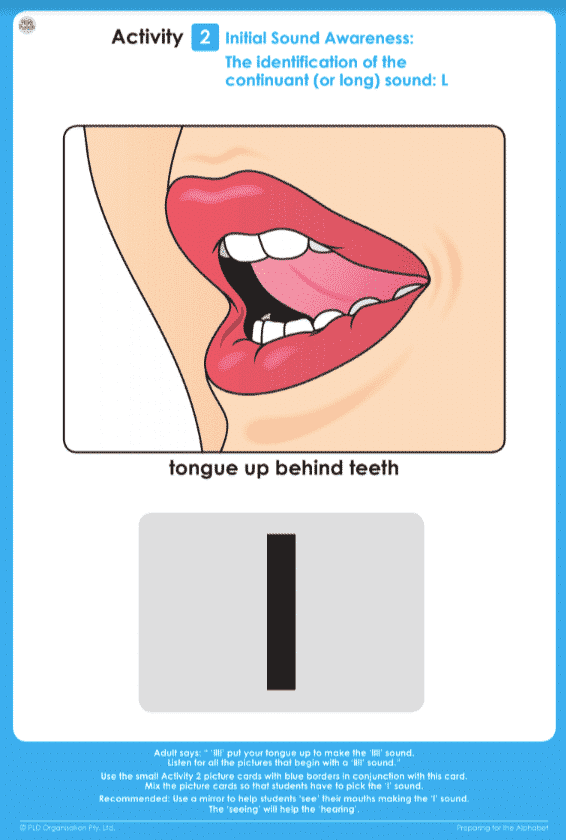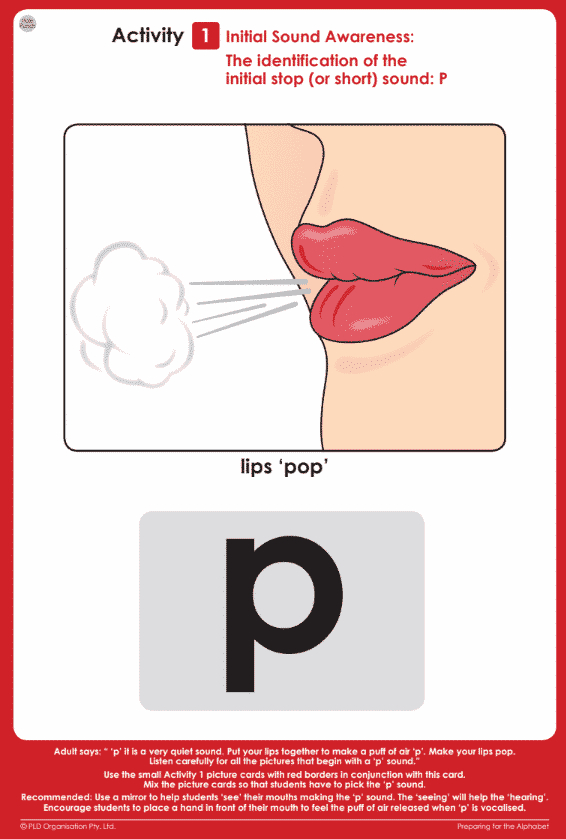Many early childhood services, including daycare centres and kindergartens, introduce formal literacy concepts to young learners. While this approach is well-intentioned, it is crucial to ensure that children have developed the pre-literacy skills necessary for future reading and writing success. Without these foundational skills, many children may struggle, leading to literacy difficulties later on.
Tip 1: Prioritise Teaching Alphabet Sounds Over Letter Names
Research indicates that the most effective pathway into literacy is through the knowledge of alphabet and phonic sounds rather than letter names. Children who learn letter sounds first can more easily transition into reading and spelling.
PLD’s Alphabet the Multisensory Approach resource can be used to teach the letter sounds with embedded mnemonics supporting children to learn the sounds associated with the letter.


Tip 2: Establish Initial Phoneme Awareness
Initial phoneme awareness is a strong predictor of alphabet learning success for both reading and spelling.
Why is initial sound awareness important?
When children can hear, say, and think about the initial sounds in words, they are better prepared to connect these sounds to their corresponding letters. For example, a child who identifies that ‘sun’ starts with ‘ssss’ and ‘tap’ starts with ‘t’ will find it easier to link these sounds to the letters ‘S’ and ‘T’.
To ensure all children develop phoneme awareness, PLD has created Preparing for the Alphabet, focused on initial sound awareness and includes:
- Continuant sounds (e.g., sssss, mmmmm, nnnnn) which are long and easier to distinguish.
- Stop sounds (e.g., b, p, t, k) which are short and more difficult to hear.


Tip 3: Develop Onset-Rime and Three-Sound Word Blending
Blending is an essential skill for reading development. Even if a child has letter sounds knowledge, but cannot blend sounds together they will be unable to read words. Two key stages in blending instruction are:
- Onset and rime blending: This involves breaking words into an initial sound (onset) and the rest of the word (rime), e.g., blending /c/ and /at/ to make ‘cat’.
- CVC (consonant-vowel-consonant) blending: This involves smoothly combining all three sounds in simple words like /d/ /o/ /g/ to make ‘dog’.
To support blending development:
- Use the Learning to Blend Onset and Rime Flip Book & Learning to Blend Three Phonemes Flip Book resources
- Use continuous blending (no gap between sounds) as this can be easier to hear the word e.g., ssssuuuunnn rather than /s/ /u/ /n/
- Use words with a long sound at the beginning as opposed to short sounds e.g., ‘moon’ is easier to blend than ‘tip’.
- Use visual aids such as word-building cards.
- Model and provide short but frequent practise.
Blending is a critical bridge between knowing letter sounds and being able to read words fluently. The Early Years Pre-Literacy Screen includes Onset & Rime Blending and CVC Phonemic Blending to assess blending development.



 print
print